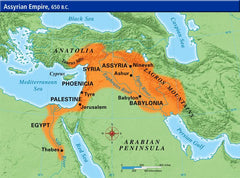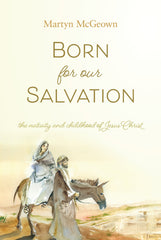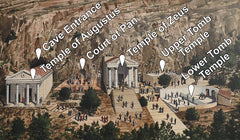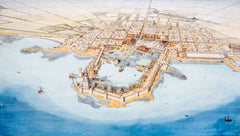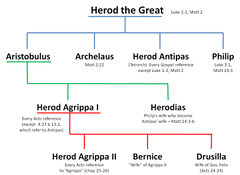Your cart is empty now.

Remembering the Schism of 1953: Schism It Was
This article was written by Prof. David J. Engelsma in the Vol 79 Issue 16 5/15/2003 of The Standard Bearer.
_____________
The schism in the Protestant Reformed Churches (PRC) in 1953 was … schism.
This is often slighted, if not overlooked, in discussion of the controversy in the PRC in the early 1950s. Interest in the doctrinal issue tends to leave the schismatic aspect of the struggle in the shadows.
Ignoring, or even minimizing, the schism is a mistake.
Any remembrance of the events in the PRC culminating in the split of 1953 must begin with the rending of the body of Christ in one of her visible, instituted manifestations.
Schism is grievous sin. First Corinthians 12:25 admonishes against any “schism in the body.” Ephesians 4:3 calls every church member to exert himself strenuously “to keep the unity of the Spirit in the bond of peace.” The Belgic Confession calls every person to join the true church and forbids the members to separate themselves from it as a matter of “maintaining the unity of the church” (Articles 27-29). Article 80 of the Church Order of Dordt mentions “public schism” second in the list of gross sins that make a Reformed officebearer worthy of suspension or deposition from office. Only heresy precedes it. The Reformed “Form for the Administration of the Lord’s Supper” bars from the sacrament “all those who are given to raise discord, sects and mutiny in [the] Church,” that is, those who are guilty of schism.
Rending the Body
The instituted church displaying the marks of the true church is the body of Christ. To leave that church is to leave Christ. To divide that church is, as regards the schismatic’s action and intention, to lacerate Christ’s body and to wound the head.
The reason why schism is not taken seriously today is a widespread contempt for the church. Independency and individualism prevail among religious people. Schism is self-willed and self-seeking, rather than church-willed and church-seeking.
Schism Doctrinally
1953 was sin against the unity of the church in the PRC. The faction that broke with the PRC in order soon to return to the Christian Reformed Church (CRC) divided the body of Christ. They did that by introducing false teaching into the churches. False doctrine is usually, though not always, the cause of schism. The false doctrine that tore the PRC apart was the teaching of a universal, gracious covenant promise of God to every baptized person, indeed to everyone who hears the gospel, which gracious promise is dependent for its realization and fulfillment upon man’s work of faith as a condition. This teaching is diametrically opposed to the confession of sovereign, particular, unconditional grace in the Canons of Dordt, the official and binding creed of the PRC.
Apart from its falsity, the doctrine of a universal, gracious, conditional promise of the covenant opposed the fundamental stand of the PRC from the very beginning of their existence as a denomination of Reformed churches. Every minister in the denomination knew this well. When two Protestant Reformed ministers told Reformed ministers in the Netherlands, who were rightly cautious about sending their emigrant members to the PRC, that the PRC had no definite covenant conception, they lied. Their lie was believable, and even defensible, as every effective lie is, because it was crafted around a kernel of truth. Until the PRC adopted the “Declaration of Principles” in 1951, they had no definite conception of the covenant officially.
But they had a definite conception of the covenant and its promise unofficially. Already in 1927, Herman Hoeksema wrote the work that would soon be published as Believers and Their Seed, setting forth the covenant conception of the PRC. The book was, and was recognized as, a foundational work for the PRC. In this work, he outlined and condemned the covenant conception that would later be defended by the faction that split the PRC. Hoeksema demonstrated that this doctrine of the covenant, as taught by Prof. Heyns of Calvin Seminary, was at the root of the doctrine of common grace adopted by the CRC in 1924, particularly the first point’s teaching of a well-meant offer of the gospel. Of course, it was the CRC’s adoption of three points affirming common grace that had resulted in the formation of the PRC.
For ministers of the PRC to say that the PRC had no definite covenant conception, and to suggest that having one was of no importance to the PRC, was a lie. It was as if, prior to Dordt’s adoption of predestination, ministers in the Reformed churches formed through Calvin’s teaching would have said, “We have no definite conception of predestination, and having a definite conception is of no importance to Calvinism.”
Introduction of the doctrine of a conditional covenant into the PRC was calculated to throw these Churches into turmoil and divide them.
Schism Church Politically
The schism of 1953 also had church political features. The faction that left the PRC did not submit to church government. This too commonly characterizes schism in the church. Schismatics despise the authority of the assemblies and ride roughshod over the rules of the adopted church order. Without protesting, a faction in First PRC, Grand Rapids, Michigan refused to submit to the decision of the April and May 1953 meeting of Classis East and the decision of the consistory of First Church that certain teachings of one of the ministers of First Church were heretical and that the minister must apologize or be suspended from office. Nor did this faction submit, under protest if need be, to the suspension of the minister and the deposition of a number of elders by the consistory of First Church with the advice of a neighboring consistory. Later in 1953, Classis West high-handedly denounced and renounced decisions taken by Classis East and by the consistory of First Church, Grand Rapids, even though these decisions were altogether outside the jurisdiction of Classis West.
Vital principles of the Reformed church order, that is, the living government of His church by King Jesus, were flagrantly violated. The result was schism in the body of Christ.
Conniving at the Schism
To the undying shame of the CRC, that denomination welcomed the schismatic faction into their fellowship with open arms, along with the hundreds of thousands of dollars in cash and property that had originally been given and built for the sake of the truth confessed by the PRC. No confession of the sin of rending the unity of, and well-nigh destroying, the PRC was required.
Hoeksema bitterly lamented this conniving of the CRC at the sin of schism:
The Synod of the Christian Reformed Church does not deal with the Protestant Reformed Churches but with schismatics and with a schismatic Synod. Does not the Synod of the Christian Reformed Church know this? Of course, they do. Does not the Synod of the Christian Reformed Church know that a minister of the Protestant Reformed Churches was legally deposed from office and that this deposition was sealed by Classis East? Of course, they do. Does not the Synod of the Christian Reformed Church know that, when the Classis approved of the suspension and later of the deposition of the minister referred to above some of the delegates simply left the Classis and organized a separate Classis which later was recognized by the schismatic Synod? Again, I say: of course, they do. And, therefore, it is very plain that the Synod of the Christian Reformed Church knows that it is not dealing with the Protestant Reformed Churches, in this attempt to unification, but with schismatics. And in doing so, they heap sin upon sin (Standard Bearer, Oct. 1, 1960, p. 4).
Harbingers of the Coming Storm
Before 1953, there were harbingers of the coming storm. There was a spirit of independency in the churches. Hoeksema publicly criticized that spirit in an editorial condemning the use of catechism books that had not been adopted by synod.
Churches in a denomination are autonomous. They are not independent. The fundamental idea, necessity, and purpose of denominational federation (literally: covenant-union!) are the unity of the church. To the unity of the Reformed denomination belong oneness of doctrine; oneness of liturgy, which includes the Bible version and the songbook used in public worship; oneness of government, according to an adopted church order; oneness of Christian, holy life; oneness in the training of ministers; and oneness in the cooperative work of missions.
For certain congregations, ministers, or groups in the churches to go off on their own in these areas, apart from and even in disregard of the federation, is independency. Independency is a threat to the precious unity of the churches, if it is not inherently divisive.
Looking back, one may wonder whether the creation of a new church paper in 1944, Concordia, was not a tremor along a fault-line, hidden at that time, but really present, which would violently shake the churches fewer than ten years later. Was there dissatisfaction with the distinctively Protestant Reformed theology and polemical nature of the Standard Bearer under the editorship of Herman Hoeksema?
It is certain that when the doctrinal controversy surfaced a few years later, in the late 1940s, Concordia became a vigorous opponent of the Protestant Reformed doctrine of sovereign, particular grace in the covenant and an equally vigorous advocate of a conditional covenant. Concordia displayed no affection for the Standard Bearer. It closed its pages to Herman Hoeksema, before the split became a reality.
Treachery?
There is reason to suspect treachery in the schism of 1953. The treachery would have been the secret determination of at least some of the ministers to take the PRC, or as many of the people as they could, back into the CRC, while these ministers were insisting that they maintained Protestant Reformed doctrine and intended to continue as the PRC.
There are good reasons for the suspicion. First, within the astonishingly short span of eight years, the faction that left the PRC completed its negotiations with the CRC and returned to that denomination.
Second, I myself, then a seminarian, attended the 1961 synod of the faction that had left the PRC (at the behest, I may add, of Herman Hoeksema, who very much wanted to know what went on at that synod, but would not, of course, attend himself). This was the synod that decided to return to the CRC, the motion at the 1960 synod to return having been defeated by a vote of eight to eight. In the discussion, which was open to all present and previous officebearers in that denomination, a leading elder of the faction’s First Church vehemently opposed the motion to return to the CRC. Without contradiction and in obvious anger, he declared to the assembly that “within six months of our leaving the PRC, Rev. De Wolf was teaching our young people in catechism that we should return to the CRC. The consistory had to reprimand him for this.” “Leaving the PRC” were that elder’s words, and for this the chairman rebuked him.
Third, recently there has come into my possession an intriguing set of papers. The papers are studies of the doctrines that separate the PRC and the CRC. The authors are ministers of the faction that left the PRC and leading ministers of the CRC. Evidently, the papers were presented at meetings of the two groups of ministers at which the papers were discussed. One of the papers begins, “The subject for this evening’s discussion.” The obvious purpose of the papers and meetings was to negotiate the return of the faction that left the PRC to the CRC.
These are the authors and subjects of the papers: Rev. M. Gritters, on the equal ultimacy of election and reprobation; Rev. Henry Vander Kam, on the world of John 3:16; Rev. J. Howerzyl, on the world of John 3:16; Dr. P. Y. De Jong, on God’s hatred; Rev. John Geels, on the well-meant offer; Rev. M. Gritters, on God’s purpose with the preaching of the gospel to the unsaved; Rev. C. R. Veenstra, on the meaning of grace; Dr. P. Y. De Jong, on the second point of common grace of 1924; Rev. J. Howerzyl, on the second point of common grace; and Rev. J. Blankespoor, on the third point of common grace. There is also a paper by an unknown writer on God’s favorable attitude to the reprobate.
What is intriguing about the papers, and ground for suspicion of treachery on the part of at least some of the leaders of the faction that split the PRC in 1953, is that the earliest of the papers is dated January 15, 1954. The others follow on a monthly schedule. Since the schism in the PRC became final with the decisions of Classis West in September 1953 repudiating the decisions of Classis East and supporting the suspended minister and deposed elders of First Church, the papers show that meetings of ministers of the faction that had just left the PRC and ministers of the CRC with the purpose of the return of the faction to the CRC were taking place a scant four months after the schism in the PRC was a reality.
Were meetings arranged, papers assigned, and papers written between the middle of September 1953 and the middle of January 1954? Or was the groundwork for such meetings laid long before the split occurred? Perhaps such meetings could be arranged in four months. But the climate for such meetings had to have been prepared long before. And even if, of a sudden, in September 1953 the ministers of the faction that had left the PRC asked Christian Reformed ministers for meetings to explore the possibility of the return of the faction to the CRC, during all this time the ministers of the faction that had left the PRC were loudly proclaiming to the world that they were the legitimate PRC. They were assuring their own people that they intended to remain the true PRC and had no intention of returning to the CRC.
Lessons of the History
Schism it was.
As schism, it was wicked on the part of those responsible for it, especially the ministers and other officebearers, though all the church world approved.
As schism, it was painful to the PRC and their members, agonizingly painful. Those were cruel days for us. Ask those in the PRC over sixty who were members at the time.
As schism—the tearing of His body—it displeased the Lord Jesus Christ. He will judge. He has already judged in history—the history of the faction that broke with the PRC, the history of the PRC, and the history of the CRC.
What can we members of the PRC learn from the schism of the schism of 1953?
In mercy, Christ spared the Churches for His name’s sake. Fifty years later, we must be thankful.
Christ did more. He brought good out of that evil. The good was, and is to this day, a clear understanding of the unconditionality of the covenant of grace and an entire denomination of Reformed churches committed to living, developing, and confessing the unconditional covenant of grace.
We are also warned against schism. No one should find dividing the body of Christ more detestable than we, who have suffered the evil. The warning is urgent in our time. Ours is a time when every discontented church member feels free to stir up the congregation against the consistory, or leave. Ours is a time when any minister who does not get his way in the church and can hoodwink enough members to support him divides the congregation and abandons the denomination. Ours is a time when groups of disaffected members, who dislike some decision or other, or who probably have lost control of synod, strike out on their own, to form a new denomination.
Regardless that the church or churches that are abandoned clearly display the marks of the true church of Jesus Christ! Regardless that the issue is not a fundamental doctrine of the gospel!
Ours is a time when theologians introduce into the Reformed churches novel, false doctrines concerning both faith and life.
Regardless that the basis of the church’s unity is the truth!
“Behold, how good and how pleasant it is for brethren to dwell together in unity! … for there the Lord commanded the blessing, even life for evermore” (Ps. 133:1, 3).
— DJE
The content of the article above is the sole responsibility of the article author. This article does not necessarily reflect the opinions and beliefs of the Reformed Free Publishing staff or Association, and the article author does not speak for the RFPA.

Donate
Your contributions make it possible for us to reach Christians in more markets and more lands around the world than ever before.
Select Frequency
Enter Amount

